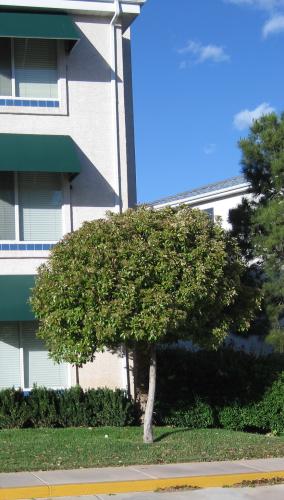|
Complete your landscape design with landscape-trees
Using landscape-trees to create contrast will add curb appeal to your home. Of course you will need to select the right kind of tree for the right spot in the landscape. This is a hoopsie spruce which only gets about 12'tall and 7' wide. I guess that means it must be about mature then, right?? This home,landscaped in a southwestern landscape style, is in a high desert area of Utah which allows the use of the blue spruce and pine trees. 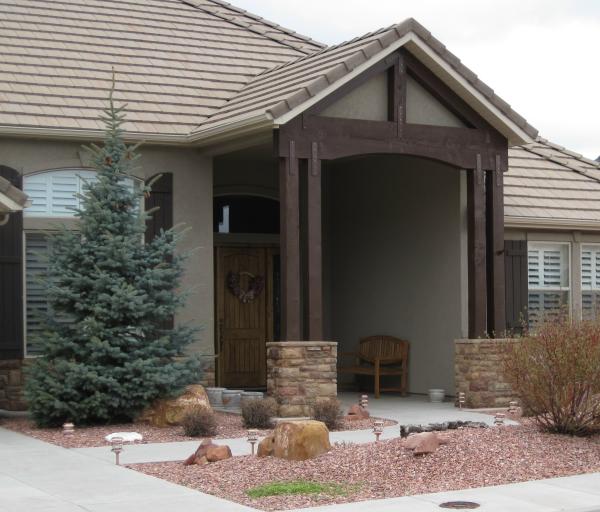
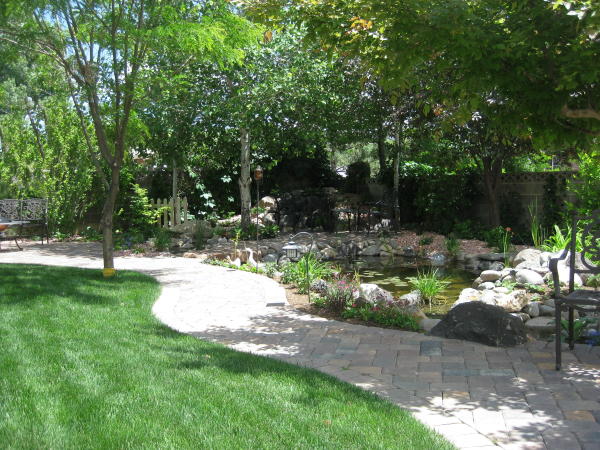
Landscape-trees can also create privacy and create shade. That's the reason we built this koi pond in this location. The trees make a great back drop which in turn creates a secluded feeling for those enjoying the view. They also provide shade where special plants with special needs, can grow and thrive. This secluded area wouldn't feel the way it does without the landscape-trees to back it up.
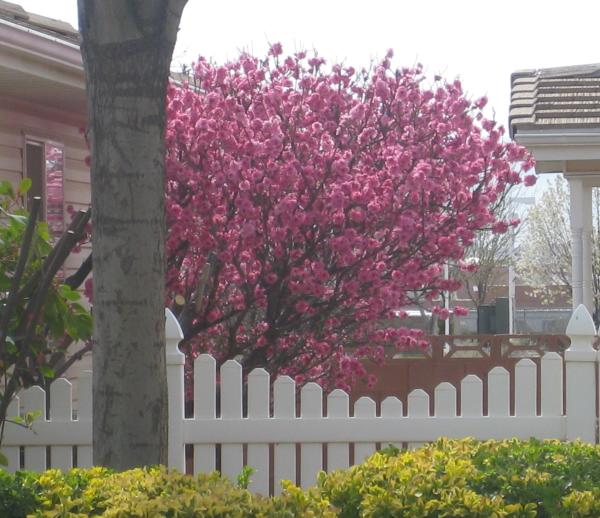
Flowering trees can add more dimension to the landscape look during different times of the year. Most trees have a variation of a flower during the spring time, and others offer their flowers during the heat of the summer. I've found that a variety of trees in any landscape can create interest all year long.
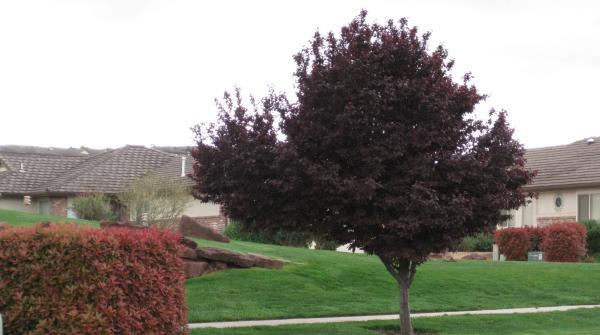
Another way to create variety is to use trees with different color leaves. While most trees offer a green leaf, others are red or yellow or dark green the variety is what creates contrast in landscaping. Something else to consider when placing the trees in your landscape design, is which varieties will have leaves in the winter and which will not. It may be smart to plant a shade tree in front of a south facing window for shade in summer and also to allow the sun in during the winter months. This could help save money on the power bill in both seasons.
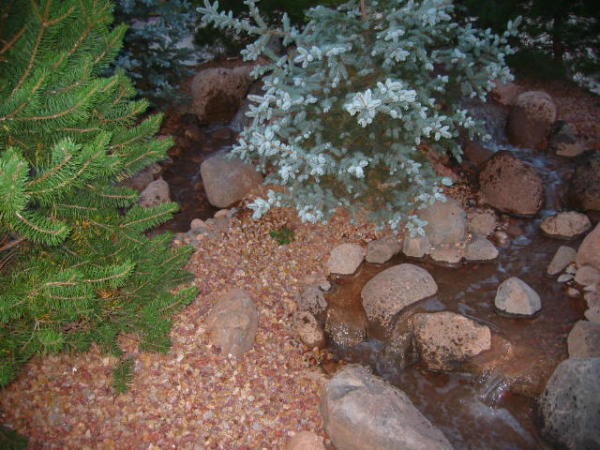
The biggest reason I use landscape-trees that are evergreens is for the color contrast. In the spring these pines will grow little new chutes we like to call candles. Think of this as their flower. It's their new growth variation. It's not really their flower, the pine cone is the pine trees flower or method of propagation. The new pine cones look cool too. That is as long as their isn't too many to pick up. That's another consideration about pine trees. Darn pine needles really blow. The pines in the photo above are very clean. They do moult a little which means they shed some of their inside needles. But the amount is minimal, and a small price to pay for the beauty of the blues and greens of pines and spruces.
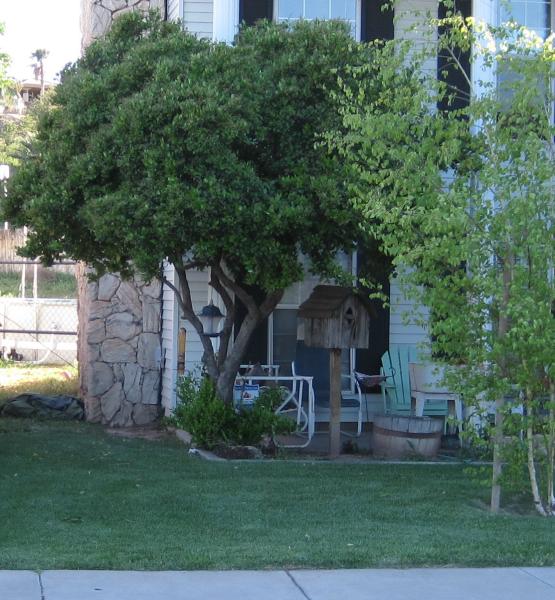
There are a wide variety of evergreen trees. Some are pine trees or juniper trees, and others like Japanese privot or photenia trees are actually a bush grown big to be a tree.

Palm trees are also evergreen. Prone only to warmer areas like deserts and tropical environments, palm trees provide a sophisticated and relaxing look to landscaping. A mediterranean landscaping style wouldn't be complete without palms. The contrast element with a palm tree is achieved with the trunk. Some have a criss cross pattern on the trunk and others have horizontal lines. but the different color and texture of the trunks provides a canvas of sorts to display things like flowers and ornamental grasses. The mature palm tree provides a canopy of greenery and shade. Majestic beauty is a feeling created by large canopy type groups of palm trees.
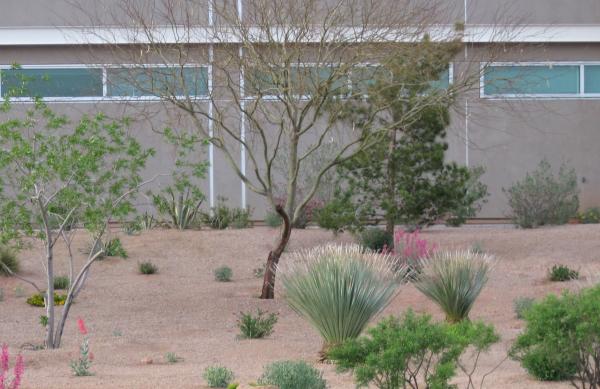
Another category of landscape-trees we can talk about is desert trees. This one is called the palo-verde-tree and can be picked out easily by the green limbs. You will find that most desert trees have very small leaves. this reduces the impact from the sun on the tree. These trees are quite lacy looking and airy. You can usually see right through them. They still do the same jobs as other conventional trees, but just with a drought tolerant. The thing I like most about all varieties of desert plant life is the color. The desert can be a really super colorful place when it has some moisture.
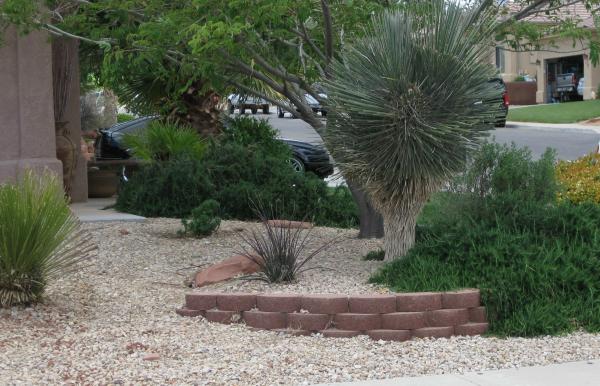
Did you know that most yucca plants turn into trees eventually? That's right those heads of needles start to grow a trunk under them and begin to rise up, becoming a substantial feature in the landscape. This is why I always place these yuccas behind a boulder and then put low growing flowers in front of the boulder. Next I plant a medium growing flowering plant to one side or the other and voila there you have it a desert scene. The cool thing is, all yucca plants flower. Yes, they get a plume or shaft that grows right out of the center of the needles and sometimes extends 20' in the air depending on the variety. This is their way of propagation. Show below is the agave plant. It recently finished flowering, and now is dropping it's little seeds everywhere.
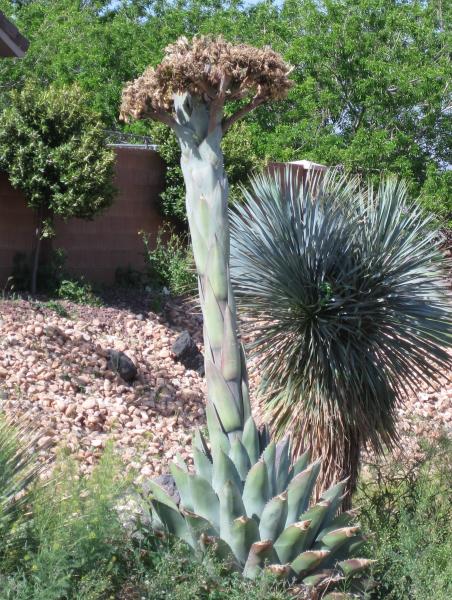
|
